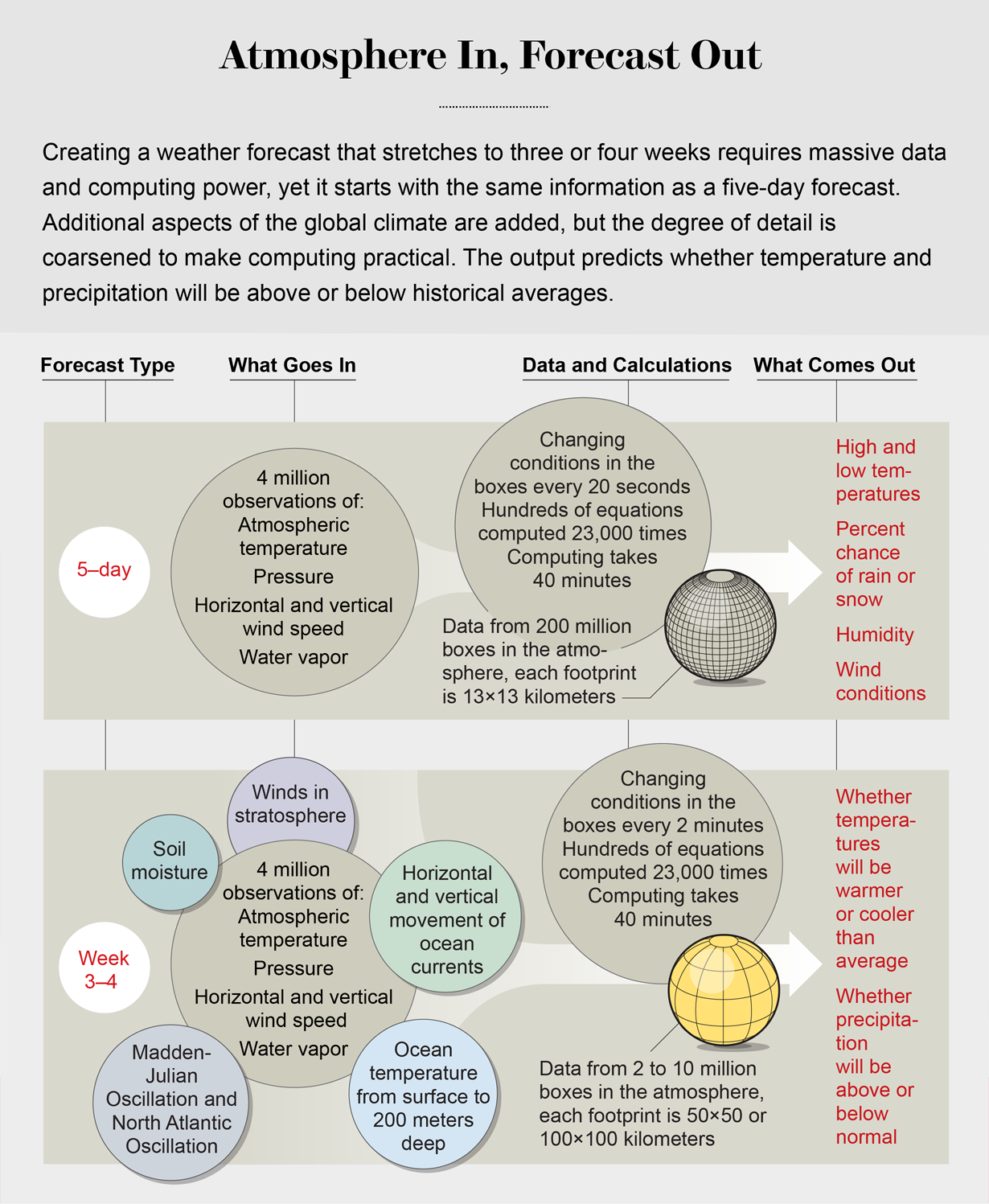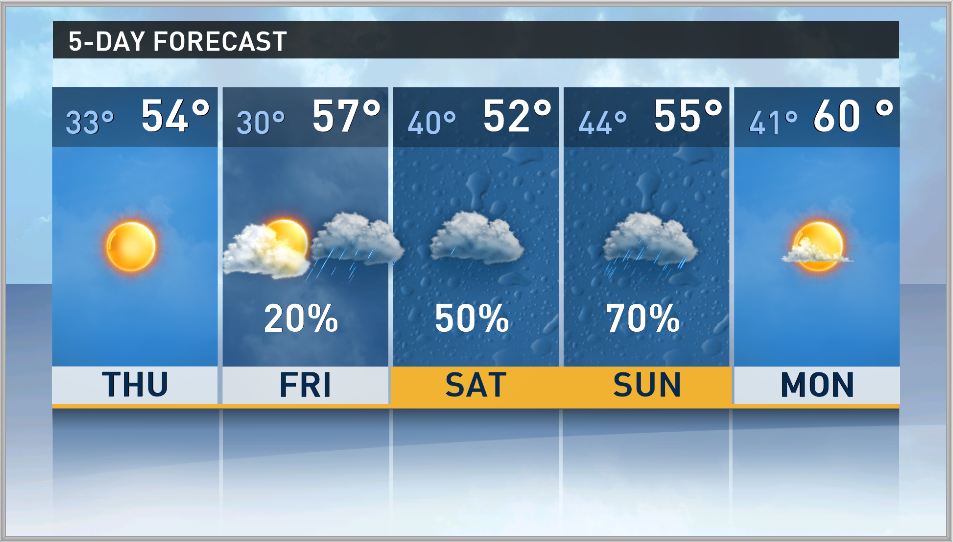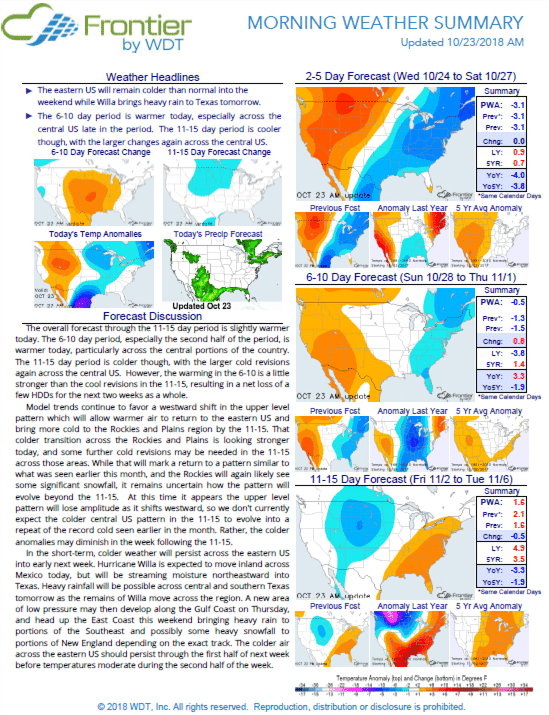How Accurate Are Weather Forecasts 10 Days Out? Everything You Need To Know
Weather forecasting has evolved significantly over the years, thanks to advancements in technology and meteorological science. If you're wondering how accurate are weather forecasts 10 days out, you're not alone. Millions of people rely on long-range forecasts for planning their daily lives, vacations, and even business operations. But how much faith can we place in these predictions?
Long-range weather forecasts, particularly those stretching 10 days into the future, are a blend of science and uncertainty. Meteorologists use sophisticated computer models, satellite imagery, and historical data to predict future weather patterns. However, the accuracy of these forecasts diminishes as the time horizon increases. This article will explore the reliability of 10-day weather forecasts, the science behind them, and tips for interpreting them effectively.
Whether you're planning a trip, managing agricultural activities, or simply curious about the weather, understanding the limitations and capabilities of 10-day forecasts can help you make better decisions. Let’s dive in and uncover the truth about how accurate weather forecasts 10 days out really are.
Read also:Michael Hussman The Man Behind The Curtain In Modern Finance
Table of Contents
- The Science Behind Weather Forecasting
- How Accurate Are Weather Forecasts 10 Days Out?
- Factors Affecting Forecast Accuracy
- The Role of Technology in Weather Prediction
- Understanding Weather Models
- Tips for Interpreting 10-Day Forecasts
- Benefits of Long-Range Forecasts
- Limitations of 10-Day Forecasts
- How Forecast Accuracy is Improving
- The Future of Weather Forecasting
The Science Behind Weather Forecasting
Weather forecasting is a complex process that relies on a combination of meteorological principles, advanced technology, and statistical analysis. At its core, it involves understanding the behavior of the atmosphere, which is influenced by factors such as temperature, humidity, wind patterns, and pressure systems.
Key Components of Weather Forecasting
- Atmospheric Observations: Meteorologists collect data from various sources, including weather stations, satellites, and radar systems, to monitor current atmospheric conditions.
- Computer Models: This data is fed into powerful computer models that simulate the atmosphere and predict future weather patterns.
- Statistical Analysis: Historical weather data is used to identify trends and patterns, which help improve forecast accuracy.
While short-term forecasts (1-3 days) are generally reliable, the accuracy decreases as the forecast horizon extends. This is due to the chaotic nature of the atmosphere, where small changes in initial conditions can lead to significant differences in outcomes—a concept known as the butterfly effect.
How Accurate Are Weather Forecasts 10 Days Out?
The accuracy of weather forecasts 10 days out varies depending on several factors, including the location, season, and weather patterns. On average, 10-day forecasts are about 50% accurate in predicting general weather trends, such as whether it will be sunny, rainy, or snowy. However, specific details like temperature and precipitation amounts tend to be less reliable.
Accuracy Rates
- Temperature Forecasts: Temperature predictions for 10 days out are generally accurate within a range of 5-10 degrees Fahrenheit.
- Precipitation Forecasts: The probability of precipitation (PoP) becomes less reliable beyond 7 days, with accuracy rates dropping to around 30-40%.
- Severe Weather Events: Forecasting severe weather events, such as hurricanes or thunderstorms, is even more challenging at this range.
Despite these limitations, advancements in technology and modeling techniques continue to improve forecast accuracy over time.
Factors Affecting Forecast Accuracy
Several factors influence the accuracy of weather forecasts, especially those extending 10 days into the future. Understanding these factors can help you interpret forecasts more effectively.
Key Influencing Factors
- Atmospheric Chaos: The atmosphere is inherently unpredictable, making long-range forecasts inherently uncertain.
- Geographical Location: Weather patterns in coastal areas and mountainous regions can be more challenging to predict than those in flat, inland areas.
- Seasonal Variability: Weather forecasts tend to be more accurate during stable seasons, such as summer, compared to transitional periods like spring and fall.
- Data Availability: The availability and quality of observational data can impact forecast accuracy, particularly in remote or poorly monitored regions.
By considering these factors, meteorologists can provide more informed and reliable forecasts, even at longer ranges.
Read also:Cody Sadler The Rising Star In The Entertainment Industry
The Role of Technology in Weather Prediction
Technology plays a crucial role in modern weather forecasting. Advances in computing power, satellite technology, and data collection methods have significantly improved forecast accuracy over the years.
Technological Advancements
- Supercomputers: Modern supercomputers can process vast amounts of data and run complex simulations, enabling more accurate and detailed forecasts.
- Satellites: Weather satellites provide continuous monitoring of atmospheric conditions, allowing meteorologists to track weather patterns in real-time.
- Radar Systems: Doppler radar and other advanced radar systems help detect and track precipitation, improving short-term forecasts.
As technology continues to evolve, we can expect further improvements in the accuracy and reliability of weather forecasts, including those extending 10 days out.
Understanding Weather Models
Weather models are the backbone of modern forecasting. These mathematical representations of the atmosphere simulate weather patterns based on current conditions and historical data. Different models use varying approaches and assumptions, leading to differences in forecast outcomes.
Types of Weather Models
- Global Models: These models cover large areas and are used for long-range forecasts, such as 10-day predictions.
- Regional Models: Focused on smaller areas, these models provide more detailed forecasts for specific regions.
- Ensemble Models: These models run multiple simulations with slightly different initial conditions to account for uncertainties in the forecast.
By comparing results from different models, meteorologists can identify trends and make more informed predictions, even at longer forecast ranges.
Tips for Interpreting 10-Day Forecasts
While 10-day forecasts can provide valuable insights, it's important to approach them with a critical eye. Here are some tips for interpreting these forecasts effectively:
Interpretation Guidelines
- Focus on Trends: Pay attention to general weather trends rather than specific details, as trends tend to be more reliable than exact predictions.
- Compare Multiple Sources: Consult forecasts from multiple sources to get a more comprehensive understanding of potential weather patterns.
- Stay Updated: Keep checking forecasts as the date approaches, as accuracy improves significantly in the short term.
By following these guidelines, you can make better use of 10-day forecasts and plan accordingly.
Benefits of Long-Range Forecasts
Despite their limitations, long-range forecasts, including those 10 days out, offer several benefits. They provide valuable insights for planning and decision-making in various sectors.
Key Benefits
- Agriculture: Farmers can use long-range forecasts to plan planting and harvesting activities.
- Travel: Travelers can make informed decisions about vacation plans and packing essentials.
- Business Operations: Businesses can prepare for weather-related disruptions and optimize resource allocation.
While these forecasts may not be 100% accurate, they still offer valuable information that can enhance planning and preparation.
Limitations of 10-Day Forecasts
It's important to recognize the limitations of 10-day forecasts to avoid placing undue reliance on them. These limitations stem from the inherent unpredictability of the atmosphere and the challenges of modeling complex weather systems.
Common Limitations
- Uncertainty: The farther into the future the forecast extends, the greater the uncertainty.
- Model Biases: Different models may produce conflicting results, making it challenging to pinpoint exact outcomes.
- Localized Variability: Weather patterns can vary significantly over short distances, making it difficult to provide precise forecasts for specific locations.
By understanding these limitations, you can use 10-day forecasts as a guide rather than a definitive prediction.
How Forecast Accuracy is Improving
Advancements in meteorological science and technology continue to improve the accuracy of weather forecasts, including those extending 10 days out. Innovations in data collection, modeling techniques, and computational power are driving these improvements.
Factors Contributing to Improvement
- Increased Data Availability: More observational data from satellites and other sources enhances model accuracy.
- Enhanced Modeling Techniques: Improved algorithms and computational methods allow for more detailed and accurate simulations.
- Machine Learning: Artificial intelligence and machine learning are being used to analyze vast amounts of data and identify patterns that improve forecast accuracy.
As these advancements continue, we can expect even better long-range forecasts in the future.
The Future of Weather Forecasting
The future of weather forecasting looks promising, with ongoing research and technological innovations paving the way for more accurate and reliable predictions. From improved modeling techniques to the integration of artificial intelligence, meteorologists are constantly pushing the boundaries of what's possible in weather prediction.
Emerging Trends
- AI and Machine Learning: These technologies are being used to enhance forecasting capabilities and improve accuracy.
- Hyperlocal Forecasts: Advances in data collection and modeling are enabling more precise forecasts for specific locations.
- Climate Modeling: Long-term climate models are being developed to better understand and predict large-scale weather patterns.
As we move forward, the accuracy and reliability of weather forecasts, including those 10 days out, will undoubtedly continue to improve.
Kesimpulan
In summary, weather forecasts 10 days out offer valuable insights but come with inherent limitations. While they are generally reliable in predicting broad weather trends, specific details like temperature and precipitation amounts may vary. Advances in technology and meteorological science continue to improve forecast accuracy, making long-range predictions more reliable than ever before.
To make the most of 10-day forecasts, focus on general trends, compare multiple sources, and stay updated as the date approaches. By understanding the science behind these forecasts and their limitations, you can make informed decisions and better prepare for future weather conditions.
We encourage you to share your thoughts and experiences with 10-day forecasts in the comments below. Additionally, feel free to explore other articles on our site for more in-depth information on weather and related topics. Thank you for reading!


